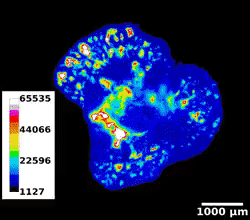|



To find us:
Fac. de Médecine, Bât. Huriez,
Pôle Recherche, CHU Lille
5th floor, Epicentre Est wing
GPS: 50.611406, 3.035198
|
Our team is highly interdisciplinary. It brings together students and researchers from a variety of disciplines, including pharmaceutical sciences, medical sciences, biochemistry, molecular biology & physiology, to work side by side. We focus on gel-forming mucins in link with respiratory infections, as well as cervico-vaginal mucins in relation to women's health and pregnancy. We're always on the lookout for new members excited by our field of research, and we'd love you to join us!
Current members of the team are:
Jean-Luc Desseyn, PhD, HDR, head of the mucus team
Valérie Gouyer, PhD, HDR, Eng. CHU
Emilie Wong Chong, PhD, Postdoc
Frédéric Gottrand, MD, PhD, PUPH
Léonie Vandomber, Tech.
Adjunct to the group:
David Séguy, MD, PhD, PUPH
Jean Lesage, PhD, PU
Delphine Ley, MD, PhD, PUPH
Laure Dubernat, Thesis D3
Previous PhD students:
Hélène Valque, PhD (2008-2011), Translational medicine early project representative, Servier, Orléans
Céline Portal, PhD (2013-2016), Postdoctoral fellow, Institut de la Vision, Paris
Bastien Demouveaux, PhD (2016-2019), Researcher, HEDERA-22, Belgium
Salah Amini, Postdoctoral fellow, Norway (PhD under the supervision of D. Séguy)
Guillaume Lacroix, PhD (2018-2022), Eng. Res/Dev, Epynext Therapeutics, Grenoble, France
Nathan Hennion, PhD (2021-2025)
|


